5 August, 2021
Sebastian Oreb
Structural Balance With A Grain Of Salt
Training for structural balance is one of my highest priorities for any of my athletes. It almost goes without saying that if you’ve read, watched, or studied any of my content, you will have heard me talk about the value of taking a structurally balanced approach to your training. So it might come as a bit of a shock for you to hear me say that anything you’ve ever heard me say on this topic should actually be taken with a grain of salt. That’s right, my training advice isn’t gospel and it always needs to be considered within the right context. Don’t get me wrong, I would be flattered if someone mistook me for a modern-day bald Jesus, but I’m not here to gain that kind of following – I’m here to educate people on how to get the best possible results out of their training and to explain how I’ve developed my methods that I’ve successfully applied to achieve some amazing results over the years, in the hopes that you can also understand them, apply them yourself or your clients, and achieve similar success in your training.
So this brings me to the point of this article, which is to play devil’s advocate and argue the other side of structural balance training – there are situations where training exclusively for balance will have diminishing returns, there are certain contexts where a balanced approach to training should not come at the cost of performance, times where improving your performance will make you unbalanced, and instances where seeking balance is not actually that helpful. By arguing both sides, we will take a more in depth look at what structurally balanced training is, and what it is not.
As a general rule, I prefer to keep my methods very simple. I want to help as many people as possible, and as a coach who works predominantly online, I know that if I want to help a broad range of people I need to simplify and systemise the information that I provide. The benefit of a systemised approach is that I can help people en masse, but the downside is that whenever anything is condensed and simplified, it’s easy for it to be taken out of context, and there is a fine line between “simplified” and “oversimplified”. In this article, I want to unsimplify, unpack, and give a more “balanced” view of what it means to train for structural balance. See what I did there? Don’t worry, it’s ok if you didn’t find that funny, I already know that I’m funny because my 11 year old daughter laughs at my jokes all the time.
PEAK PERFORMANCE IS UNBALANCED
Training for structural balance is good. Like, it’s really good. I would even say that it’s one of my secret weapons for creating powerful and bulletproof athletes, although I speak about it constantly so it’s hardly a secret, and I’m not the first or only person to successfully use this approach – which means it’s a “secret” that I share with a lot of other great coaches. A balanced physique is good, and for many athletes it is the missing link that is holding them back from elevating their performance to the next level or staying in their sport for the long game, but if we are trying to achieve a particular result, there are times when our training, our lives, and our bodies will become very unbalanced.
This is because the closer we get to the pinnacle of performance, the less balanced we become. This is true within a training/physique context, but also in life in general. Being elite at anything requires sacrifice – with your family life, your work or business, and within your training itself. The principle of specificity tells us that the closer we get to peaking our performance, the more specific our training must become – and from a practical standpoint, this means that we must reduce our non-specific training in order to fit everything in and focus on what needs to be prioritised. Elite marathon runners will sacrifice strength and muscle mass to run further and faster, just like elite strength athletes will sacrifice their cardiovascular fitness and even sometimes their overall health to be able to achieve what they do in competition.
When it comes to elite performance, the truth is – you can never be balanced. One of my favourite quotes on this is from Dr Andrew Lock who is one of the best strength rehab specialists in the game. On the topic of being a perfectly balanced athlete, Andrew says – “If you want balance, prepare to be a little bit shit at everything.” When I say to train for structural balance, I do NOT mean that you should sacrifice performance for balance, or that everything across the board will always be balanced and harmonious. In fact, we can never actually be perfectly balanced – balance is a state of perfection that we need to aim for but can never truly attain, and the closer you get to performing at your best, the harder it is to be balanced. However, this doesn’t mean that we should throw balance out the window. If you want to be a bench specialist, and all you train is bench, then you will probably get better at it. However, if you want to be a bench specialist who has a long and successful career, then I recommend that you continue to bench a lot, but balance this out by training the opposing muscle groups and the joint angles and ranges of motion that are neglected in the barbell bench press. If you want to perform at a high level in anything, your performance pyramid will peak higher if you have a broader and more balanced foundation. This means that everyone can and should aim to build a balanced base, and this is especially important during the off-season when there is more room for variety and balance in the training.
DON’T GET PARALYSIS BY ANALYSIS – AVOID FALLING TOO FAR DOWN THE RABBIT HOLE
It’s easy to spot a yellow car when you’re always looking out for a yellow car, and if that’s the only thing you’re looking out for, you will probably miss some other important details in your environment. This brings me to my second point, and that is, structural balance is not something that should interfere with our main goal, nor is it the end goal of our training in and of itself. Structural balance is a tool that we use to help us get to our goals safely and effectively. It should compliment our goals, not conflict or overshadow them. If we go looking for an imbalance, we will always find one, but the skill of being a good coach lies in knowing which imbalances are urgent priority, which imbalances we can work on later, and which ones we probably don’t need to worry about at all (at least, within the context of training for our goal). This is something that takes time, common sense, and experience to master, and will vary depending on the athlete and their goals.
HAVE A PLAN
While it’s true that structural balance should be a high priority for any lifter, if this is coming at the cost of training your main work, building your strengths, working towards your end goal, and/or doing the training that you enjoy – then you’re taking the wrong approach. This is where we can introduce periodisation into our approach to structural balance training. As we have already discussed, the closer we get to our goal or competition, the more specific our training needs to become. This means that when we get closer to our competition/goal, we will have less time and energy for other training, including a lot of our structural balance work – but that certainly does not mean that we should abandon it altogether. As well as knowing which imbalances to prioritise, we also need to know when in our training to prioritise them, and what the most efficient approach will be at various stages of our periodised plan.
I could write an entire article on the topic of periodising for structural balance (in fact… I actually have – stay tuned for that one), but for now I just want to give a short and sweet overview of how to prioritise structural balance training within your program.
URGENT IMBALANCES
When certain imbalances need our urgent attention, we should work on them right away, no matter which phase of our training we are in. Imbalances that fall into this category include ones that are currently causing pain/injury, or put the athlete at an immediate risk of pain/injury, or are actively impacting that person’s performance and can be fixed with a simple intervention. Even if you are close to your goal or competition, these are the weaknesses you should actively be working on – but my recommendation is to choose the lowest cost exercises that you can, that will still get the best result.
While some injuries and pains may require a long term strategy to fix, this is not always the case. For example, there are some common pains that many athletes experience when peaking for a strength competition, which often come about because they are doing a lot of volume or intensity with their competition lifts but not doing enough other work in their training to balance these movements out. Three really common examples of this are lower back pain/stiffness, anterior hip/hip flexor pain, and pain through the front of the shoulder. These pains can impact the athlete’s ability to train and perform, but at this point of their training the athlete can’t simply “avoid doing the things that hurt”, because that would mean they would have to stop training their competitive lifts which would not allow them to peak properly. The solution that I would suggest, and have suggested to a lot of my athletes, is to find the imbalance that is causing the pain, and add in just enough low-cost strengthening work to bring up the weak muscle groups so that you can alleviate the pain. For the examples I just mentioned, some really effective solutions can be strengthening the abs/“core” (to alleviate lower back pain and stiffness), strengthening the “core” and glutes (to treat anterior hip pain) [1], and strengthening the infraspinatus and scapula stabilising muscles (to relieve pain through the front of the shoulder) [1, 2]. This can be done by including some low-cost exercises, it shouldn’t involve re-writing the program, it should involve strengthening what is weak, and it still allows the athlete to peak for their competition. Unless the athlete has a more serious or complex underlying issue (which would take much longer to address), I’ve found this approach is usually enough to safely get them to their competition, and most of the time it will end up improving their performance too. We are only as strong as our weakest links, so anytime we discover a weakness and strengthen it, we get stronger. I’m lucky that I get to work with some of the best strength rehab specialists in the world who have shown me how to recognise and fix some of these common imbalances, but I am not an expert on this myself. For this reason, I always recommend that you work closely with a rehabilitation specialist who has a good understanding of strength training, and if you don’t know – refer out. Pain isn’t normal, and it should always be addressed immediately.
LESS URGENT IMBALANCES
Let’s call these “moderate priority” imbalances – this category includes anything that’s important and helpful to fix, but not urgent, not posing any immediate risk to the athlete’s health, and not immediately impacting their performance. The “moderate priority” imbalances often can’t be properly addressed while we are peaking for a goal or competition because fixing these is usually a case of “taking one step backwards to take two steps forward” – so these are the things that we address when we have more time, and when peaking our performance is not the main priority. This might involve stripping a lift back and making big changes to the technique, building muscle mass, and strengthening big muscle groups/non-competition movements. During our competitive season, these are the imbalances that we can flag to work on later, and in our off-season (or further out from our competition/goal), we can use more variation in our training, dig in, and place a higher priority on achieving balance in these areas. Further out from competition, when we have the opportunity to use more variation in our training, we should use it, because this will build an even stronger base so that when it comes to peaking and training for specificity, we can push harder and achieve more without plateauing.
To give you an example of what I’m talking about, if you have an athlete who needs to make significant changes to their technique, this is not something you should do while you’re peaking for a competition – changing technique can be frustrating and time consuming so it’s best to save this for the off-season. Similarly, if you are a powerlifter, there is a lot of benefit you can gain from strengthening your overhead press, full range high bar/front squat, and deadlift variations like the snatch grip deficit deadlift. These can be really beneficial in the long term, but they are high-cost exercises that may not be a good choice to include or prioritise in a powerlifting peak. They are, however, excellent movements to focus on in the off-season, and this also makes a great argument for why every lifter should be taking regular off-seasons.
EVEN LESS URGENT IMBALANCES
Lastly we have the “low priority” category – imbalances that probably won’t ever affect our performance, are completely normal, would exist whether we are training or not, and do not increase our risk of injury or pain in the short or long term. This one is difficult to quantify, because something that is low priority for one person, might be medium or high priority for another person. Let me give you an example. I am right handed, which means that my left hand is a lot worse at any fine motor tasks, and it’s also a bit weaker than my right arm. At no point have I thought that improving the dexterity in my left hand will carry over to a better powerlifting performance, and if I focussed all my attention on becoming ambidextrous, it would probably take away from time and energy I could spend actually becoming a better powerlifter. However, there are some people who could really benefit from this type of training – for example, if you are helping to rehabilitate a stroke victim, improving dexterity in both of their hands is probably high on your list of priorities. I am not a neurologist nor do I specialise in this kind of rehabilitation, but I wanted to give you an example of how an individual’s circumstances and goals can change what is low or high priority for them.
- If balance is our main goal, then we should prioritise that above everything else. However, for most people, balance isn’t (and shouldn’t be) the main goal – but rather, it is a tool that we use to achieve the best possible result with our main goal.
- Everything should be in moderation, including moderation itself. Obsessing over the minute details and training for balance for the sake of balance won’t get you far, but building a strong all round physique will get you very far.
- If powerlifting, sports performance, aesthetics, or anything else are the main goal, then we should prioritise the end result, but understand that the more balanced our physique is within this goal, the more longevity we will have with our training and the less likely we are to have weak links that will affect our performance and increase our injury risk.
- Training for balance should be factored in at all times, but the way that we go about this will look different depending on which stage of the program we are at, and how close we are to peaking for our goal or competition.







